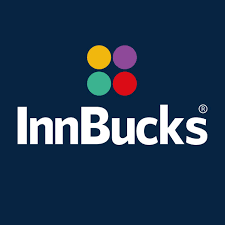
RIGHT in the middle of the pandemic, when most businesses were just focusing on keeping their heads above water, Simbisa Brands noticed the gap in the market, at least the way I see it, and capitalised on it.
At that time, intercity travel was very restricted, and the use of United States dollar (USD) was starting to regain momentum after the authorities had allowed its use to fight the effects of Covid-19.
However, the travel restriction meant that there was an opportunity in the remittances space, even locally and who better to exploit that opportunity than someone with that country-wide branch network than Simbisa Brands? Right about that time other similar products like Banc ABC’s City Hopper had just emerged, but I think InnBuck's cost-efficiency and effective campaign set them apart.
My first interaction with Innbucks was at a Simbisa outlet back in 2021, and just like any new product on the market, it was under some promotion of some sort.
If anyone remembers one of the challenges faced during that time was that smaller denominations of the USD were just not enough. If I remember correctly, some Simbisa Brands outlets for some time used credit notes as change until the master idea of getting your change deposited into your InnBucks account was born.
Before you know it, Innbucks gained much traction as it had solved two challenges for the public, change and money transfer and for selfish reasons improved customer loyalty.
It made so much noise that it caught the attention of the authorities, I suspect that someone at the Central Bank must have realised that essentially this is unlicenced deposit-taking and Innbucks was suspended with immediate effect and depositors were given 30 days to withdraw their monies.
What happened thereafter to me remains one of the most well-thought-out strategic business moves I have witnessed.
- Simbisa Brands mulls VFEX listing
- Simbisa Brands listing boost for VFEX
- Nedbank Zim heads for VFEX
- Simbisa unveils broad VFEX listing roadmap
Keep Reading
When Innbucks was launched, it was wholly-owned by Simbisa and one would assume that the most logical thing would be for Simbisa to apply for a banking licence.
Since the suspension was concerning deposit-taking activities, they then went on and sold a 100% stake in InnBucks to Ndoro Microfinance Bank, and in exchange got 35% equity in Ndoro. African Financial Services Limited and Brundish Investments own the remainder of the equity in the company.
Now Ndoro as the owner of Innbucks could operate the platform because it is a licenced deposit-taking institution, but to retain the brand and avoid confusion in the market, Ndoro then rebranded to Innbucks Microfinance Bank.
I suspect it is at this point that the shareholders of the rebranded company realised that we could do more than just change and money transfer.
According to the inaugural set of financials for the microbank, the operations of the company are now divided into retail banking, structured finance, treasury, international banking and foreign exchange, and remittances.
With a seasoned banker as the chairperson of the company, one gets the sense that InnBucks is ready to disrupt the market.
Sneaking into the retail banking and structured finance operations of the microfinance bank, you will realise 68% of its loans and advances have a maximum tenure of one year, which is typical of a micro-lender. On its interest distribution, 60% is coming from individual under salary-based loans. Interestingly, just like many banks in the country at the moment, the non-funded revenues are contributing a significant portion of the total income, and the InnBucks wallet fee contribution was worth noting.
However, the company identified the USD as the functional currency but used the Zimbabwe dollar as the reporting currency and thereby reported significant gains on exchange rate translations, making up the other part of non-funded income.
From sectoral analysis of its book Innbucks overweight the services, education, and manufacturing sectors. This is in direct contrast with the industry which is overweighting agriculture, manufacturing, and mining sectors.
A few months ago, a paper was leaked with details that InnBucks could be planning to introduce a commercial paper in the market, and this speaks to the treasury arm of the business. This is a form of fundraising where you have your money locked up in your account for a period of and get rewarded for that.
The bank also reported that it secured an offshore credit facility with Satfin Limited, which it will most likely use to improve its loan book.
The bank is also involved in dealing with derivative financial instruments to cover their exposure and as investment instruments. In the financials, reference is made to both swaps and swap options on currency.
Deposit-taking microfinance institutions are required to comply with minimum regulatory capital requirements, which are currently at US$5 million, local currency equivalent. This capital could be in the form of cash or other assets.
The microbank used its investment with the Central Bank, which is a zero-coupon instrument with a US$5 million face value and 20-year tenure as part of its capital. What this means is that if the holder is to wait for 20 years, assuming the borrower does not default, they will be given the face value which is US$5 million.
However, financial reporting best practices recommend that investments of such a nature are usually discounted to show their value today since the face value can only be realised at maturity. Despite the maturity of the investment being extended from three to 20 years, management believes that the effects of expected credit losses will be insignificant.
Technically speaking this adjustment will mean that the microbank will not comply with the requirements and also has a bearing on the profitability of the company.
Without further boring you with these technicalities, Innbucks is now a fully fleshed deposit-taking institution and one of their competitive advantages is the proximity to customers via the Simbisa Brands retail chain.
Innbucks at the moment is not a listed entity, under Simbisa brands it only appears as an associate due to its 35% stake.
They have definitely slapped mobile money operators like Ecocash in the face and they can almost expect a war on that end, but at the same time, they have other operations which only licensed banks can do.
Ecocash is also an interesting player in that space considering the plans to have it housed back under its parent company Econet. Their competitive advantage is the 10+ million subscribers and they have been aggressively chasing USD transactions of late.
- Hozheri is an investment analyst with an interest in sharing opinions on capital markets performance, the economy and international trade, among other areas. He holds a B. Com in Finance and is progressing well with the CFA programme. — 0784 707 653 and Rufaro Hozheri is his username for all social media platforms.











